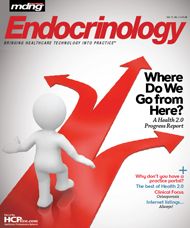Provide Your Patients with an Online Resource You can Both Trust...Your Own!
Patients are going online for health information but would prefer to get it from you. Are you there to help them?
In today’s busy medical practice setting, physicians often fail to communicate everything that patients need or want to know. If verbal instructions are shared, they are readily forgotten. Patient handouts are helpful, but in a 2004 physician survey, 80% of physicians reported doing a “poor” or “very poor” job of distributing handouts during office visits. When patients leave the office with unanswered questions, they naturally turn to the Internet to fill the information gap.
Google, WebMD, and other online resources off er in-depth health information about virtually every possible medical topic. But casual online searches by patients can quickly lead to misinformation, conflicting recommendations, and a general feeling of being overwhelmed.
Patients need information from the source they trust most: their own physician. But most doctors don’t offer patient education information online. Most practice websites are focused on providing administrative information and promoting the physicians and their business. And those practices that have taken the time to publish educational content often find it difficult to maintain.
There are several benefits to having your own patient education resource available online. In a 2007 physician survey distributed by Vivacare:
48% of respondents stated that having patient education available online reduces phone calls regarding therapy. 57% stated that offering an online educational resource saves time during patient discharge. 67% stated that patient education improves patient satisfaction.
The educational content you provide on your practice website should cover the conditions you treat, procedures you perform, and medications you prescribe. If you have already created patient handouts, you should make them available online. Your website can also be populated with content from third-party sources that you have evaluated and determined are balanced and reliable. These may include:
• Government agencies (eg, NIH, CDC, NCI, etc)
• Professional medical societies and associations (AAFP, AAP, ACC, ACAAI), many of which now offer basic information about the conditions their members treat. Some have developed more in-depth patient-resources, such as www.cardiosmart.com from the American College of Cardiology. • Patient advocacy organizations (eg, AHA, ALA, ACS). These groups often provide practical information about insurance, employment, school, and other lifestyle issues on their sites.
To make your patient educational offering particularly robust, you might consider licensing interactive content from a medical publisher, such as the Patient Education Institute or Wired.md, which sells online presentations and videos.
Or you could try Vivacare, a free patient education service that enables physicians to quickly create their own Web-based patient education library that is preloaded with printable handouts and clinical images. The content can be easily customized to match your specialty and personal approach to care. Topics can be turned on or off, photos can be published, and handouts can be edited or replaced with your own. The library can be integrated into your existing website or serve as the basis of a standalone practice website.
It benefits you and your patients if you can tell them “to learn more about your diagnosis, visit my website.” Patients and their families benefit by gaining convenient access to health information that reinforces what they learned (or should have learned) in your office. They gain a firm grasp of your qualified opinion before going to anonymous websites for second and third opinions. You can strengthen your voice amidst the online noise and have a useful tool that improves clinical care and increases patient satisfaction.
Dr. Becker is a pediatrician and President-founder of Vivacare, which provides medical practices with customizable Web-based patient education services.
